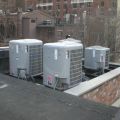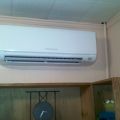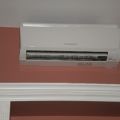Things to Consider for Central Air Conditioning Installation in Queens and Manhattan

In boroughs of Queens and Manhattan, people are in high need of central air conditioning system to survive the sweltering summer. There is nothing like a cool and comfortable home to provide relief from the basting heat of summer that is just around the corner. But there are several key points to keep in mind prior to taking the plunge into the world of central air conditioning installation in Queens and Manhattan for optimal performance and efficiency.
Things to Consider Prior to Central Air Conditioning Installation in Queens & Manhattan:
1. Professional Assessment:
With this in mind, before any central air conditioning installation can start, there must first be a professional’s homestead assessment for the cooling needs. Call out an HVAC specialist to perform measurement test for the size of your home, current insulation level, condition of existing ductwork, and any unique architecture to cut down airflow. This will help in getting information about the size and the kind of system that will fit best for the center of air conditioning your property.
2. Choosing the Right Air Conditioning System:
Modern technology offers a varied selection of options: traditional splits, ductless mini-splits, and many more. Each one comes up with suitable benefits. For example, in older homes, where ductwork may be challenging to install, ductless mini-split systems stand out in terms of flexibility and energy-efficiency. On the other hand, traditional split systems are ideal for larger homes with existing ductwork.
Consulting with an HVAC professional will set your mind at ease as they nail down the ideal system configuration that suits your needs, be it a furnace, central air conditioner, or heat pump.
3. Energy:
Consequently, while opting for central air conditioning, always take energy efficiency into account. With an energy-efficient model, you reduce not only the impact on the environment, but utility bills in the long run too. Choose systems with high Seasonal Energy Efficiency Ratio (SEER) ratings; it will have high and best energy performance upon the operation. Check for traits, such as variable-speed motors and a programmable thermostat that will make the system more efficient and offer greater control over energy use.
4. Ductwork Inspection and Maintenance:
However, in case any ductwork is already installed in the home, it is necessary to undertake proper inspection and maintenance before the installation of a central air conditioning system. Ducts, which are leaky or poorly insulated, result in great loss of energy and performance. Seal leaks and ensure proper insulation in order to maximize airflow and efficiency. It provides better indoor air quality and prevents potential health hazards.
5. Permit and Code Compliance:
Central air conditioning may, in fact, require permits and to comply with local and state building codes, as well as other regulations, regarding installation. Find out requirements for permits as well as the latest codes before any work begins. Failure to file for the required permits or meet the standards of enforcing regulators may cause fines, delays, and safety hazards. Work with a licensed, credible HVAC contractor.
6. Budget Considerations:
The central air conditioning system is an investment. If that is the case, then a budget for it has to be in place. It will, most definitely, be in the cost of installation. Also take the aspects of maintenance into account alongside potential energy saving. Low purchasing prices are very tempting, but a high-quality, energy-efficient system really runs better in terms of savings and long-term usage, and overall, you stay in a more comforted and satisfied state.
7. Maintenance and Service Plans:
Once your central air system is operating, it will require regular maintenance or service for it to run well in the new years. You may want to consider buying a maintenance or service plan through your HVAC Company. Many offer regularly scheduled check-ups, replacement filters, and other additional services, such as priority service during problems or emergencies. Investments like these in preventive maintenance are necessary to detect problems at the very onset. The important parameters worth assessing and summing in a professional way show that the central air conditioning in Manhattan and Queens may indeed have a need for an assessment before installation.
Related items:
 5/13/2020
Why Should You be Finalizing a Central Air Conditioning Installation in Queens for Your Home
5/13/2020
Why Should You be Finalizing a Central Air Conditioning Installation in Queens for Your Home
 8/19/2019
A Consumer Guide for Central Air Conditioning Installation in Staten Island
8/19/2019
A Consumer Guide for Central Air Conditioning Installation in Staten Island
 5/4/2021
When to Schedule Expert Ductless Air Conditioning Repair in Manhattan
5/4/2021
When to Schedule Expert Ductless Air Conditioning Repair in Manhattan
 5/22/2019
Why To Get in Touch with Experienced Ductless Air Conditioning Installation in Brooklyn Experts
5/22/2019
Why To Get in Touch with Experienced Ductless Air Conditioning Installation in Brooklyn Experts
 8/17/2020
When to Consider Ductless Air Conditioning Repair in Queens
8/17/2020
When to Consider Ductless Air Conditioning Repair in Queens
